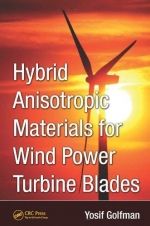Tab Article
Based on rapid technological developments in wind power, governments and energy corporations are aggressively investing in this natural resource. Illustrating some of the crucial new breakthroughs in structural design and application of wind energy generation machinery, Hybrid Anisotropic Materials for Wind Power Turbine Blades explores new automated, repeatable production techniques that expand the use of robotics and process controls. These practices are intended to ensure cheaper fabrication of less-defective anisotropic material composites used to manufacture power turbine blades.
This book covers new methods of casting or pultrusion that reduce thickness in the glass- and graphite-fiber laminate prepregs used in load-bearing skin blades and web shear spars. This optimized process creates thinner, more cost-effective prepegs that still maintain strength and reliability. The book also addresses a wide range of vital technical topics, including:
- Selection of carbon/fiberglass materials
- Estimation of combination percentages
- Minimization and optimal placement of shear webs (spars)
- Advantages of resin, such as lower viscosity and curing time
- Strength and manufacturing criteria for selecting anisotropic materials and turbine blade materials
- Analysis of dynamic fatigue life and vibration factors in blade design
- NDE methods to predict and control deflections, stiffness, and strength
Written by a prolific composite materials expert with more than 40 years of research experience, this reference is invaluable for a new generation of composite designers, graduate students, and industry professionals involved in wind power system design. Assessing significant required changes in transmission, manufacturing, and markets, this resource outlines innovative methods to help the U.S. Department of Energy meet its goal of having wind energy account for 20 percent of total generated energy by 2030.


